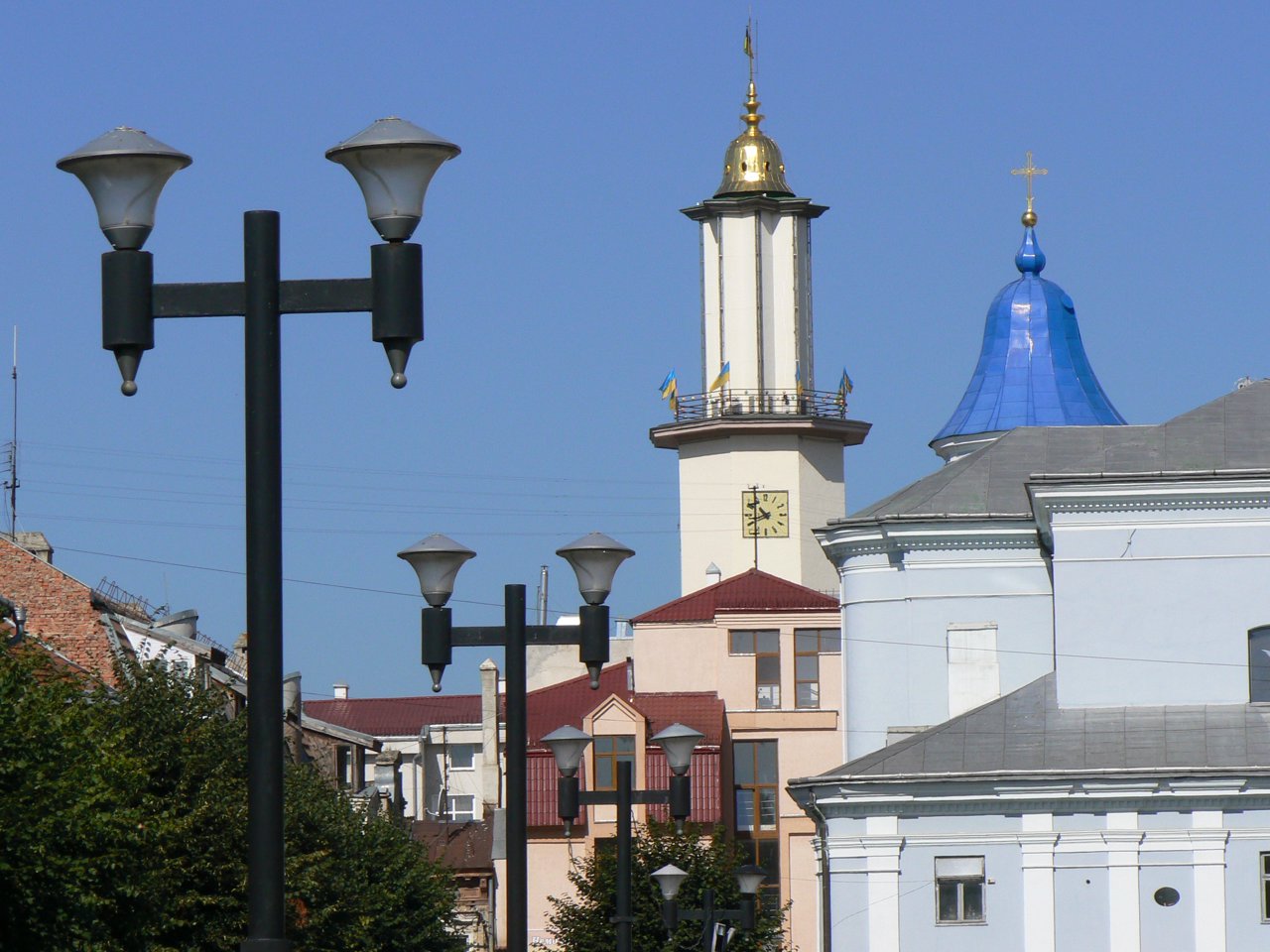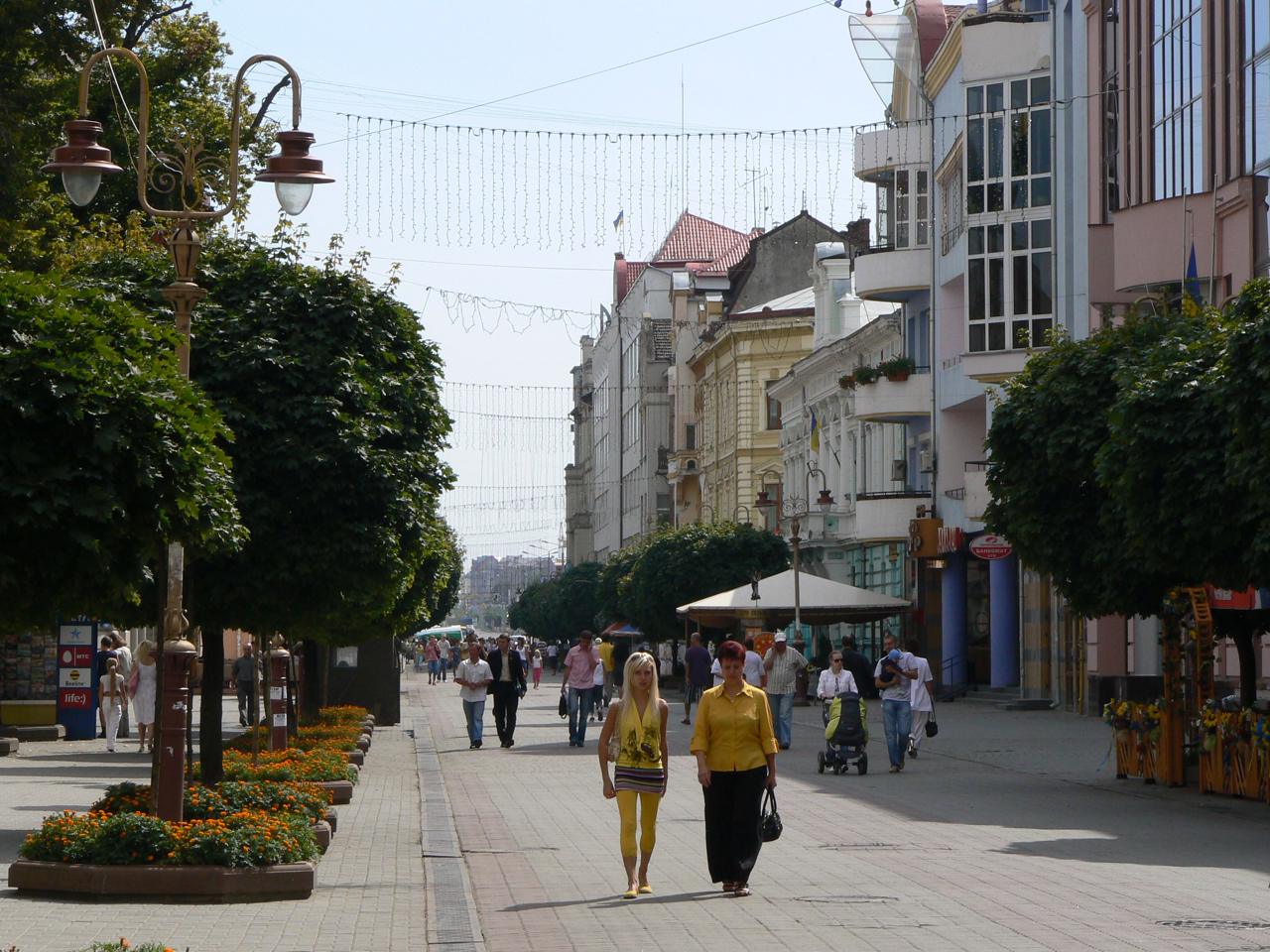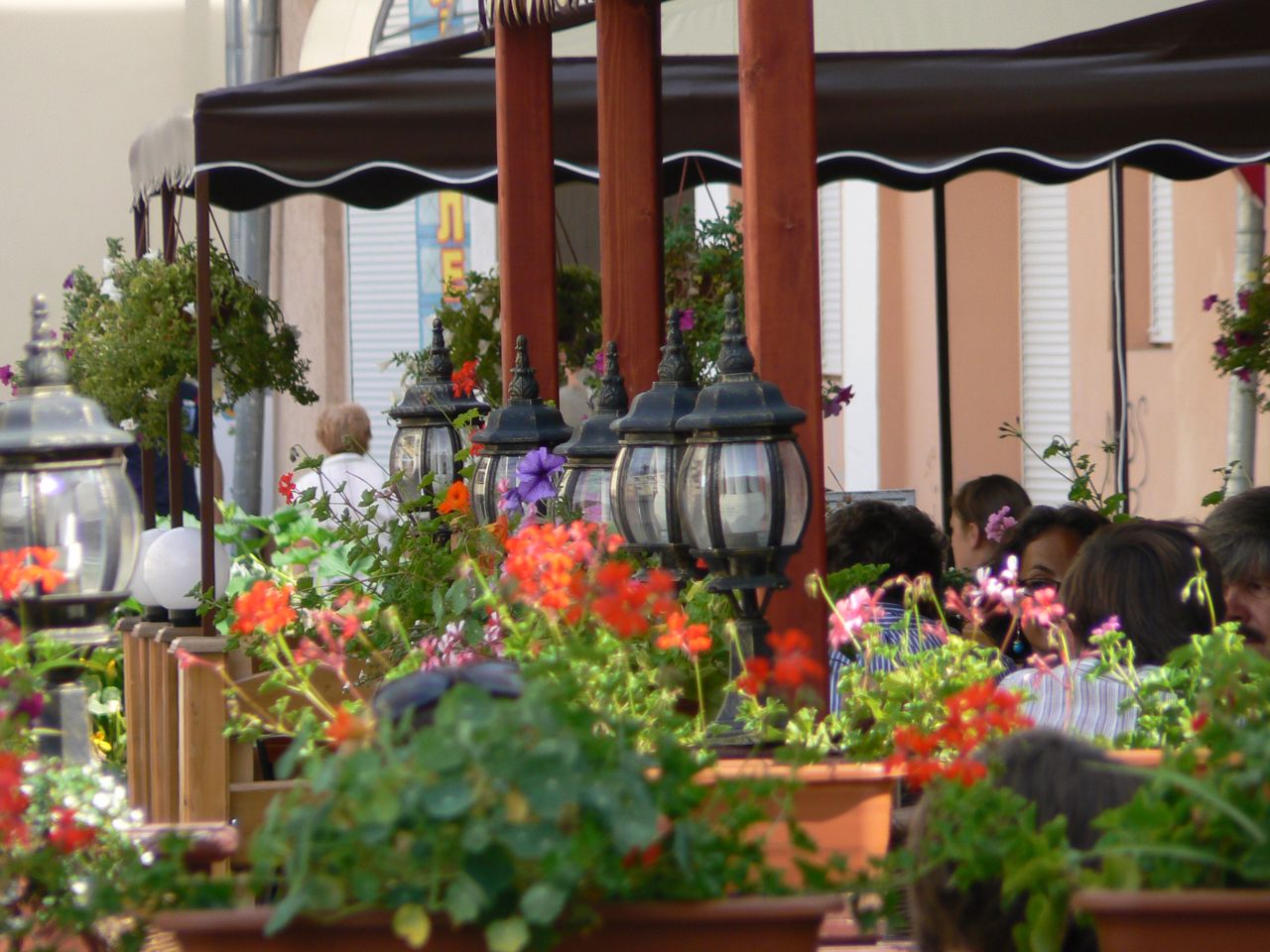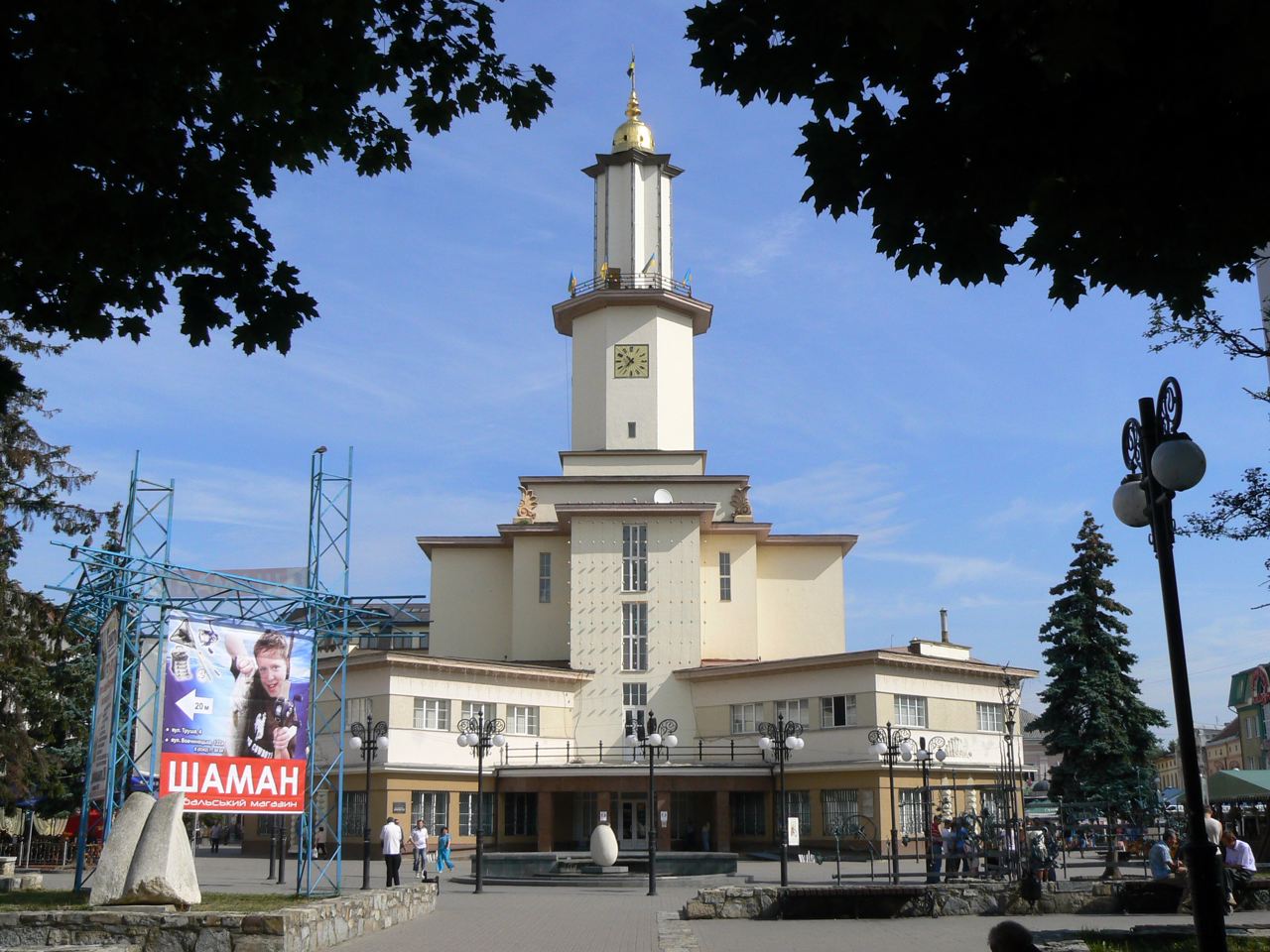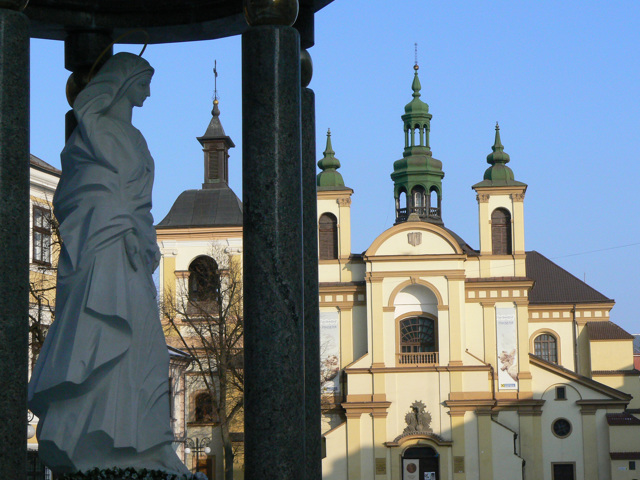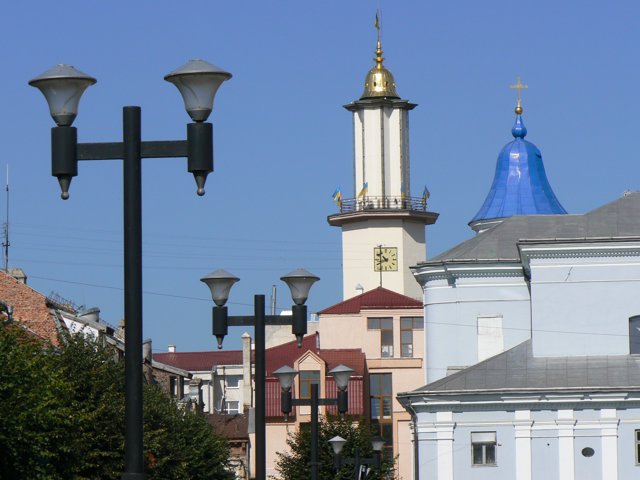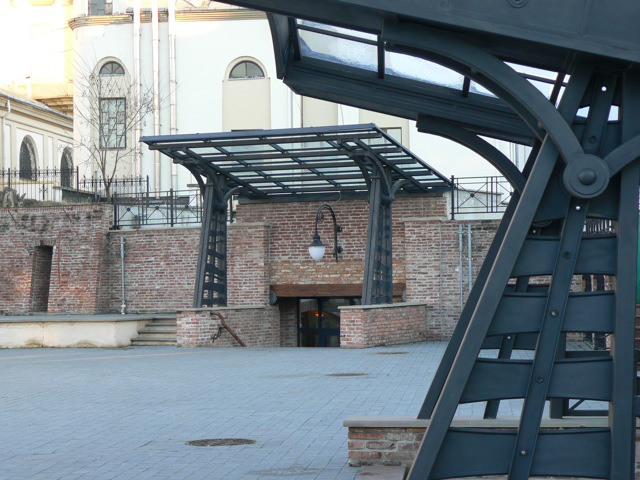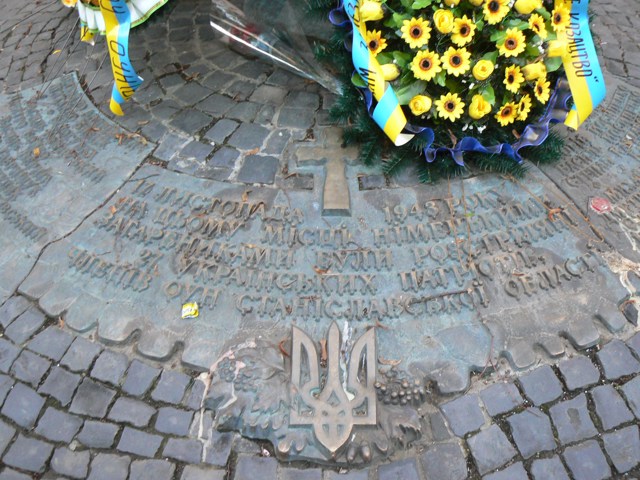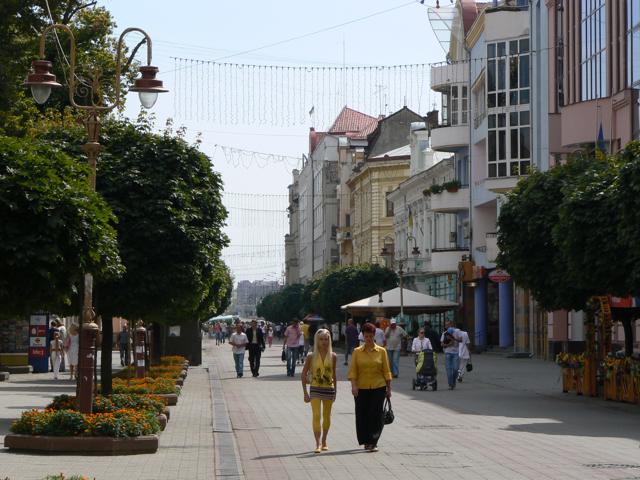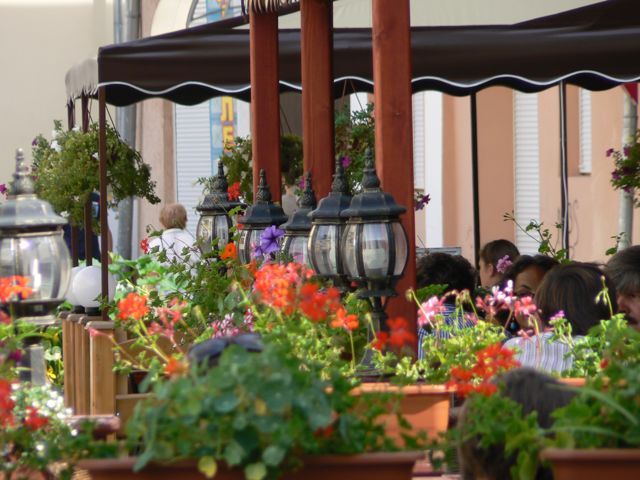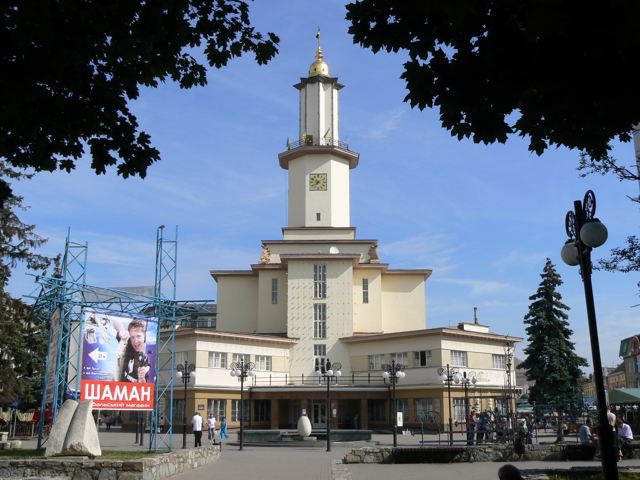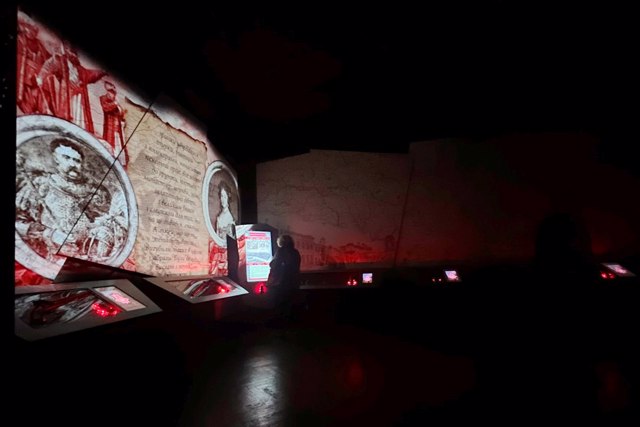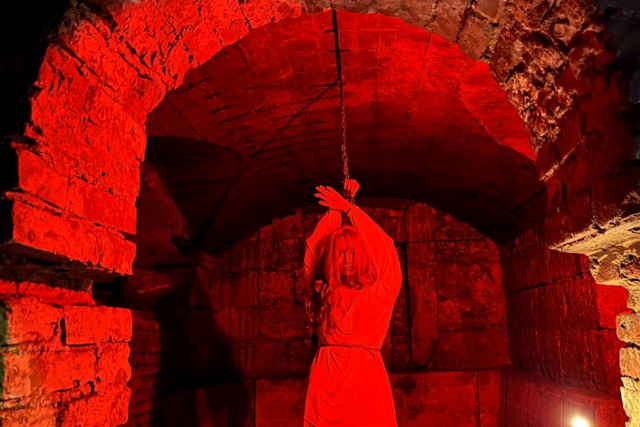Functional temporarily unavailable
Ivano-Frankivsk
Travel guide online Ivano-Frankivsk
General information about Ivano-Frankivsk
The city of Ivano-Frankivsk is one of the most tourist-attractive regional centers of Ukraine, nicknamed "Little Lviv" for its historical atmosphere and original architecture. The modern center of the Carpathian region within the historical Galicia. Located in the interfluve of Bystrytsya-Nadvirnyanska and Bystrytsya-Solotvinska.
Since the XV century. the villages of Zabolottya, Knyahynyn and Pasichna that existed in this place are known (the names have been preserved in the city toponymy). All R. XVII century. these lands belonged to the great crown hetman Stanislav "Revere" Potocki. In 1662, his son, the full hetman Andzhey Potoski, founded the fortress Stanislaviv (Stanislav) to protect against the Turks and Tatars (Stanislav was also the name of Andzhey Pot ...
The city of Ivano-Frankivsk is one of the most tourist-attractive regional centers of Ukraine, nicknamed "Little Lviv" for its historical atmosphere and original architecture. The modern center of the Carpathian region within the historical Galicia. Located in the interfluve of Bystrytsya-Nadvirnyanska and Bystrytsya-Solotvinska.
Since the XV century. the villages of Zabolottya, Knyahynyn and Pasichna that existed in this place are known (the names have been preserved in the city toponymy). All R. XVII century. these lands belonged to the great crown hetman Stanislav "Revere" Potocki. In 1662, his son, the full hetman Andzhey Potoski, founded the fortress Stanislaviv (Stanislav) to protect against the Turks and Tatars (Stanislav was also the name of Andzhey Pototsky's son). The main trade route from Lviv to the mouth of the Danube passed here. Many Poles and Armenians lived who contributed to the development of the city's economy and its cultural diversity. In 1690 monks of the Trinitarian Order arrived from Warsaw to Stanislav, and in 1716 the Jesuits - their temples became an adornment of the urban landscape.
From the moment of its foundation, the city was well fortified with defensive ramparts and stone walls. In 1772 Stanislaviv came under the rule of Austria, from 1867 - under the rule of Austria-Hungary. Almost all the fortifications were demolished, streets were laid in place of the ramparts, the city began to expand rapidly. Until now, the architecture of the restored old part is dominated by the Renaissance style.
The activity of I. Franko is closely connected with the history of Stanislavov, in whose honor the city was renamed in 1962. Mykhaylo Hrushevsky, Mykhaylo Kotsyubynsky, Denys Sichynsky, Maksym Rylsky, Yevhen Konovalets, Dmytro Vitovsky, Symon Petlyura, Stepan Bandera also visited and worked here..
In recent years, large-scale restoration work has been carried out in the center of Ivano-Frankivsk. Every year, new metal sculptures appear in the pedestrian zone around Rynok Square, made by craftsmen during the Blacksmith's Festival, which takes place as part of the Day of the City of Ivano-Frankivsk (May 7).
Місто Івано-Франківськ - один з найбільш туристично привабливих обласних центрів України, прозваний "маленьким Львовом" за історичну атмосферу та оригінальну архітектуру. Сучасний центр Прикарпаття в межах історичної Галичини. Розташоване в межиріччі Бистриці-Надвірнянської та Бистриці-Солотвинської.
З XV солітті відомі села Заболоття, Княгинин і Пасічна, які існували на цьому місці (назви збереглися в міській топоніміці). В середині XVII століття ці землі належали великому коронному гетьману Станіславу "Ревере" Потоцькому. В 1662 році його син, польний гетьман Анджей (Андрій) Потоцький, заснував фортецю Станіславів (Станіслав) для захисту від турків і татар (Станіславом також звали сина Анджея Потоцького). Тут проходив головний торговий шлях зі Льво ...
Місто Івано-Франківськ - один з найбільш туристично привабливих обласних центрів України, прозваний "маленьким Львовом" за історичну атмосферу та оригінальну архітектуру. Сучасний центр Прикарпаття в межах історичної Галичини. Розташоване в межиріччі Бистриці-Надвірнянської та Бистриці-Солотвинської.
З XV солітті відомі села Заболоття, Княгинин і Пасічна, які існували на цьому місці (назви збереглися в міській топоніміці). В середині XVII століття ці землі належали великому коронному гетьману Станіславу "Ревере" Потоцькому. В 1662 році його син, польний гетьман Анджей (Андрій) Потоцький, заснував фортецю Станіславів (Станіслав) для захисту від турків і татар (Станіславом також звали сина Анджея Потоцького). Тут проходив головний торговий шлях зі Львова до гирла Дунаю. Проживало багато поляків і вірмен, які внесли свій вклад в розвиток економіки міста і його культурне різноманіття. В 1690 році з Варшави до Станіславова прибули монахи ордену тринітаріїв, а в 1716 році єзуїти - їх храми стали окрасою міського ландшафту.
З моменту заснування місто було добре укріплене оборонними валами та кам'яними стінами. В 1772 році Станіславів потрапив під владу Австрії, з 1867 року - Австро-Угорщини. Майже всі укріплення були знесені, на місці валів прокладені вулиці, місто почало швидко розширюватися. Дотепер в архітектурі відреставрованої старої частини домінує стиль ренесансу.
З історією Станиславова тісно пов'язана діяльність Івана Франка, на честь якого місто було перейменовано в 1962 році. Також тут бували та працювали Михайло Грушевський, Михайло Коцюбинський, Денис Січинський, Максим Рильський, Євген Коновалець, Дмитро Вітовський, Симон Петлюра, Степан Бандера.
Останнім часом в центрі Івано-Франківська були проведені масштабні реставраційні роботи. Щорічно в пішохідній зоні навколо площі Ринок з'являються нові металеві скульптури, виконані майстрами під час Свята коваля, який проходить в рамках Дня міста Івано-Франківська (7 травня).
Сплануй своє перебування у Ivano-Frankivsk
What to see and where to go in Ivano-Frankivsk
Tourist attractions and museums of Ivano-Frankivsk

Potocki Palace (City and Weapons Museum)
Castle / fortress , Palace / manor , Architecture
The fortified palace-castle in Stanislav (Stanisławów, now Ivano-Frankivsk) was founded in 1672 by the founder of the city, the Halician mayor Andrzej Potocki, as his residence and the citadel of the Stanislaviv fortress. Before that, the wooden hunting castle of his father Stanisław "Rewera" Potocki served as a residence.
The first stage of construction was managed by the architect François Corassini, and after 1679 by the architect Karol Benoît. The castle consisted of a three-story palace surrounded by defensive ramparts and bastions, side service buildings and a park in the center of the castle yard. Only the front palace fence, which separated the castle from the city, with an entrance gate decorated with knightly symbols, was well preserved.
Polish King Jan III Sobieski, Transylvanian Prince Francis II Rákóczi and others visited the Potoski Palace.
Until now, the main complex of buildings has lost its original appearance, as it has been repeatedly rebuilt and adapted to the needs of various military departments. Until 2004, a military hospital was located on the territory.
In 2017, the Potocki Palace was transferred to the ownership of the Ivano-Frankivsk city hromada. First of all, the entrance gate was restored to its original appearance. The restoration of the palace buildings has begun. Artistic actions, performances and other events began to be held on the ordered territory of the architectural monument.
In 2024, the charitable foundation "Palace" Innovative Creations Space opened the "City and Weapons" Interactive Museum in the premises of the Potocki Palace. The exhibition reveals the theme of the life of the city in times of war: from its foundation through the First and Second World Wars to the present day. Replicas of the most common types of weapons are presented. of each period in physical and digital form, as well as copies of uniforms of those times. With the help of digital devices, you can view old maps, archival materials, old postcards, videos from the period of the First and Second World Wars.
On the opposite side, you can see the remains of castle ramparts and bastions, on one of which the Ascension monument with a 3-meter sculpture of Jesus Christ (2001) was installed.
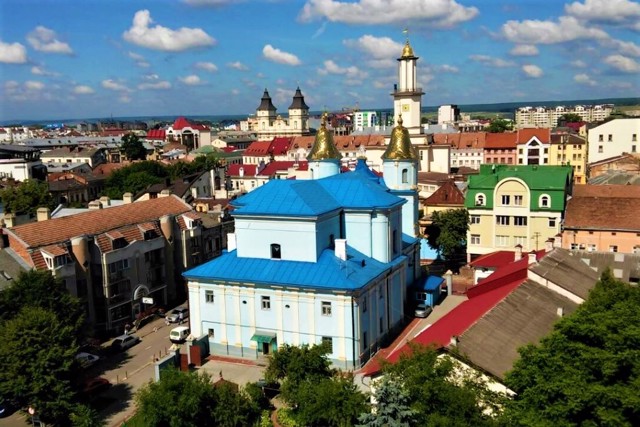
Intercession of Holy Virgin Cathedral (Armenian Church)
Temple , Architecture
The Cathedral of the Intercession of the Holy Virgin is better known to residents of Ivano-Frankivsk as the "Armenian Church" or "Blue Church".
A tall building with two towers in the mature Baroque style next to the market square was erected in the 18th century on the site of a wooden church in honor of the miraculous icon of the Mother of God (crowned in 1937, now located in Poland). Construction began after the Armenian community of the then Stanislaviv received the right to self-government. Since the Armenians did not have enough funds for construction, the owner of the city, Yuzef Potoski, obliged the Jewish community, which competed with the Armenian community in trade, to help with financing.
Two restorations in the 19th and 20th centuries significantly changed the appearance of the building.
Wooden sculpture, most likely the work of master Matviy Poleyovskyi, was used in the interior design. On the walls are frescoes made by Yan Soletskyi. The interiors were completely preserved during the Soviet times due to the fact that the museum of the history of religion and atheism was located here.
In 1990, the church was returned to believers. Today it is the Holy Intercession Cathedral of the Orthodox Church of Ukraine.
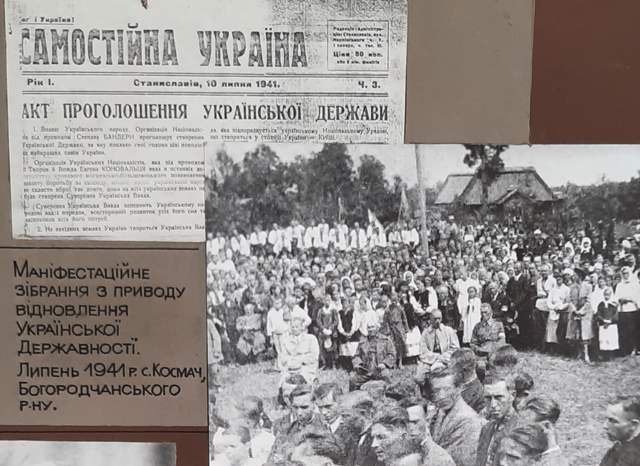
Liberation Struggle Museum named after Stepan Bandera
Museum / gallery
Ivano-Frankivsk Regional Museum of the Liberation Struggle named after Stepan Bandera is housed in a two-storey Art Nouveau building near the city center.
The museum presents documents and material covering the period from XI to XX centuries. and which tell about the struggle of the inhabitants of Prykarpattya for the independence of Ukraine. In particular, there are documents that cover the struggle against the Soviet regime of the Legion of Sich Riflemen, the Ukrainian People's Republic, the Western Ukrainian People's Republic, the OUN and the insurgent army.
The exposition dedicated to political prisoners is represented by a map of the Gulag camps and household items of prisoners.
A memorial complex "Demyaniv Laz" was built on the site of the execution of the victims of Stalin's terror.
Branches of the Ivano-Frankivsk Regional Museum of the Liberation Struggle named after Stepan Bandera are also the Historical and Memorial Museum of Stepan Bandera in Stary Ughryniv, the Museum of Liberation Struggle of Prykapattya in Kosiv, memorial complex "Demyaniv Laz", and the Museum "Roman Shukhevych Underground Headquarters" in Kniahynychi.
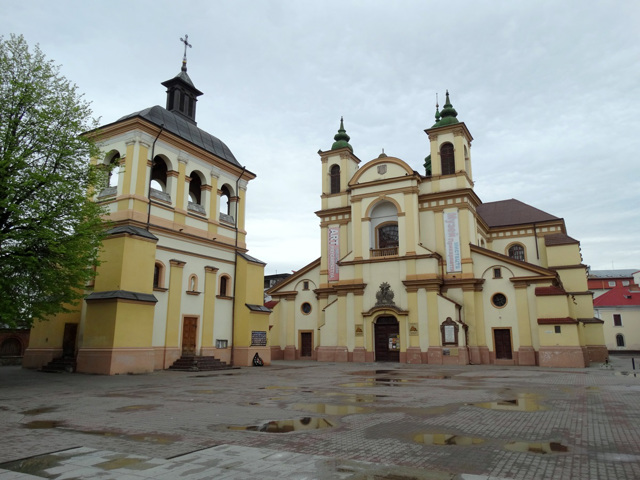
Prykarpattya Arts Museum (Collegiate Church)
Temple , Architecture , Museum / gallery
The Arts of Prykarpattya Museum in Ivano-Frankivsk is the largest treasury of sacred, fine and decorative art of Ivano-Frankivsk region, whose collection includes more than 15 thousand works of art.
The institution opened in 1980 as the Ivano-Frankivsk Regional Art Museum. It has since been housed in a Roman Catholic church.
The Collegiate (Parish) Church of the Blessed Virgin Mary, Saints Andrew and Stanislav is an architectural monument of national importance, one of the most valuable and ancient architectural and spiritual monuments of Ivano-Frankivsk. Built in 1672-1703 by French architects Fransua Korassini and Karol Benua to order the city's founders Andriy Potocki as the ancestral tomb of this magnate dynasty (Potocki's coat of arms "Pylyava" is located on the second floor on the east wall in front of the buttresses).
The three-nave basilica with a transept is made in the Baroque style with elements of the Renaissance. The interiors of the church have preserved frescoes by Erazm Fabyanskyi, which in Soviet times determined his fate to become an art museum.
Now the exhibition presents samples of Halician iconography and Baroque sculpture, the works of classics of Western Ukrainian painting: Kornyl Ustyanovych, Ivan Trush, Yaroslav Pstrak, Yulian Pankevych, Oleksa Novakivsky, Osyp Sorokhtey, Olena Kulchytska, as well as the works of Polish, Austrian, German and Italian masters of the 18th century.
The most valuable part of the collection are considered to be six sculptures by the outstanding Ukrainian sculptor Ivan Heorhiy Pinzel.
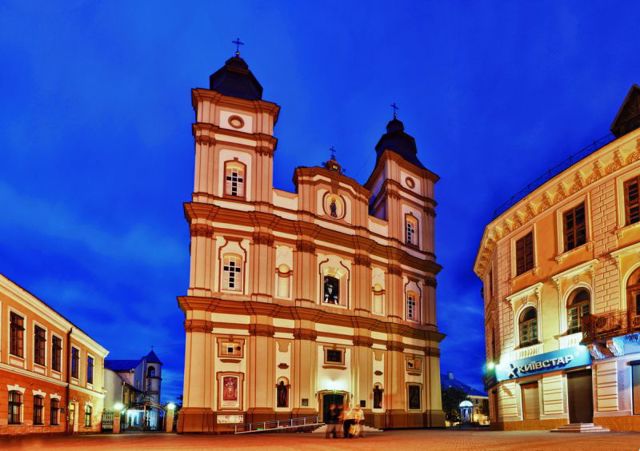
Resurrection of Christ Archcathedral and Metropolitan Cathedral
Temple , Architecture
The Archcathedral and Metropolitan Cathedral of the Resurrection of Christ is the main Greek-Catholic shrine of Ivano-Frankivsk.
The cathedral was founded in 1720 as a Jesuit church, but due to construction errors, the original building had to be completely dismantled and rebuilt in 1752. In the middle of the 19th century, the temple was handed over to the Greek Catholics and it became a cathedral.
In 1899-1890, Bishop Andrey Sheptytsky of Stanislavsky served as the rector of the cathedral before his appointment as Metropolitan of the UGCC.
The Resurrection Cathedral is considered a model of the Austro-Bavarian architectural school with clear features of classicism. At the same time, the tops of the towers are made in the style of Hutsul wooden architecture.
In the interior there is a large five-tiered iconostasis, made by the famous Ukrainian artists Modest Sosenko, Yuliush Makarivskyi and Antin Monastyrskyi.
The building of the former Jesuit monastery with the collegium, which is now occupied by the medical institute, has been preserved nearby.
In 1993, a high-relief of Andrey Sheptytskyi was installed on the facade of the cathedral, and in 1997, sculptures of Princess Olha and Volodymyr the Great as patron saint of Rus, as well as the blessed martyr Hrihoriy Khomnshin, bishop of Stanislaviv (1904-1945), were placed in the niches.
In 2025, the Cathedral Museum opened at the Archcathedral. Several exhibition halls display ancient shrouds, fragments of the cathedral's ancient iconostasis, and numerous icons and liturgical objects. A separate place in the exhibition is occupied by relics from the underground period.
Ivano-Frankivsk in news and blogs
Reviews Ivano-Frankivsk
Geographical information about Ivano-Frankivsk
| {{itemKey}} | {{itemValue}} |
|---|---|
| Region |
Ivano-Frankivsk |

